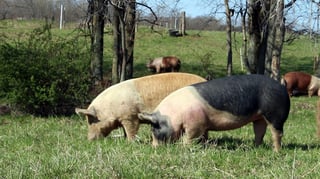Most definitions of predator/parasite rely on quite subjective (or not exactly precise) characteristics. That being said, I like Ricklefs' definition (Ricklefs, 2009), which is simple and straightforward:
It can be summarised like this:
- Predatism: a consumer-resource interaction in which the consumer (predator) removes the resource from the resource population.
- Parasitism: a consumer-resource interaction in which the consumer (parasite) does not remove the resource from the resource population.
Of course not everything is black or white, and there are situations in which applying the above definition is quite complicated, such as parasitoids or cases of parasitism that end up killing the host. However, it can be used for most of interactions.
Let's see some (counter-intuitive) examples:
This is a parasite:

A cow grazing doesn't kill the grass plant: it only eats parts of the leaves, not the whole plant. Therefore, the resource (plant) is not removed from the resource population.
This example is interesting because we, normally, tend to imagine the parasite smaller than the host. However, as you can see, a cow (the parasite) is some orders of magnitude heavier/bigger than the grass plant (the host).
This is a predator:

Pigs (sometimes, not always) like to pull up the root, eating the whole plant and, therefore, killing it. Thus, the resource (plant) is removed from the resource population, that changes from N to N - 1.
Source: Ricklefs, R. (2009). The economy of nature. Vancouver, B.C.: Langara College.



